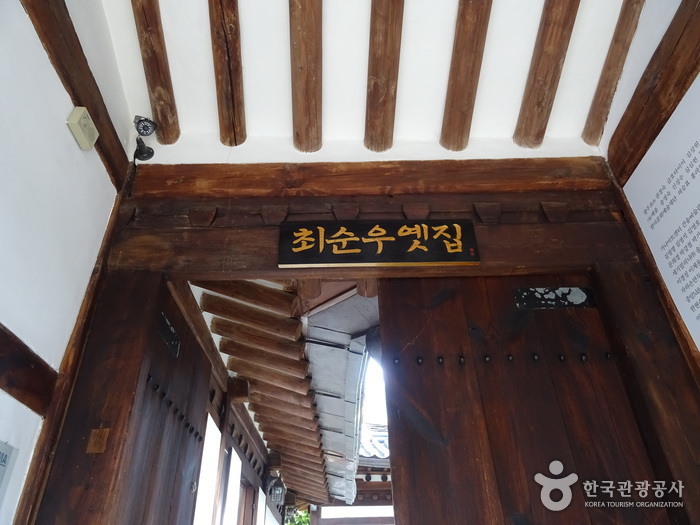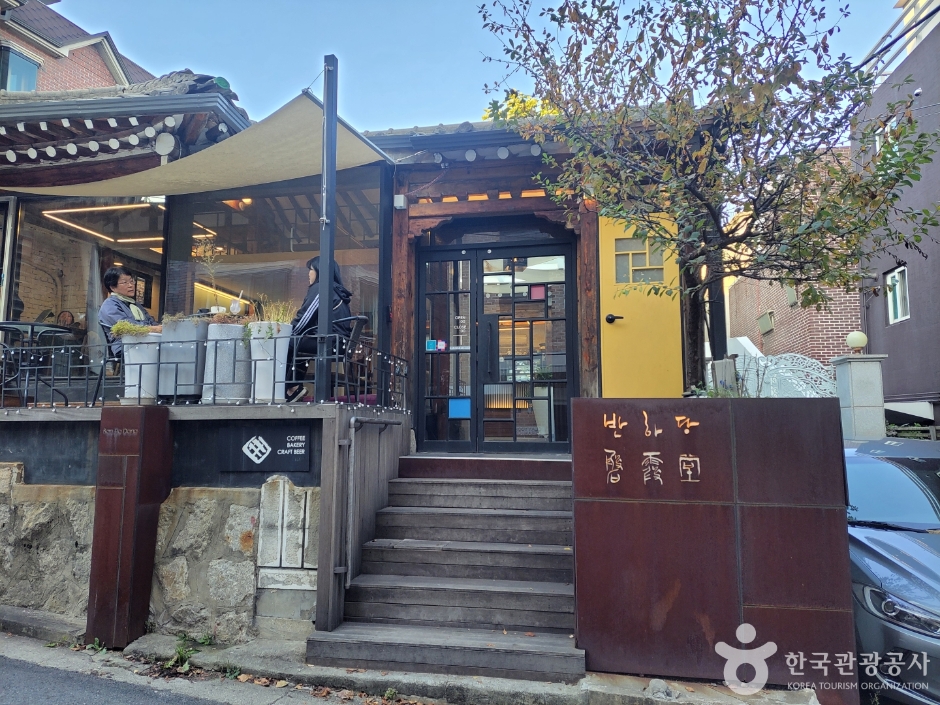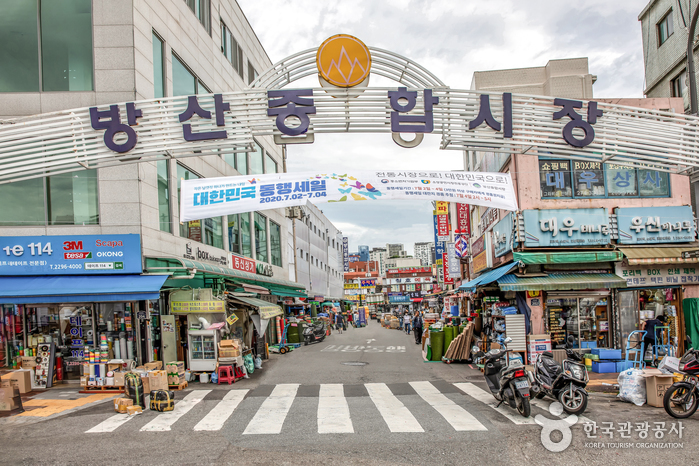Good Morning Eyewear [Tax Refund Shop] (굿모닝안경)
2.2Km 2024-04-22
61, Namdaemunsijang-gil, Jung-gu, Seoul
-
Olive Young - Myeong-dong Station Branch [Tax Refund Shop] (올리브영 명동역)
2.2Km 2024-04-22
127, Toegye-ro, Jung-gu, Seoul
-
Choi Sunu House (최순우 옛집)
2.2Km 2021-12-21
9, Seongbuk-ro 15-gil, Seongbuk-gu, Seoul
+82-2-3675-3401
The Choi Sunu House is the old residence of Hyegok Choi Sunu (1916-1984), who lived in this house from 1976 until the day he passed away. The house is designated as Korea’s Registered Cultural Property. Choi Sunu was a leading art historian who served as the director of the National Museum of Korea. He devoted his life to rediscovering the beauty of Korean art and made many academic accomplishments in the areas of Korean ceramics, traditional woodcraft, and the history of painting.
The house has been open to the public as the Hyegok Choi Sunu Memorial Hall since 2004. The memorial hall displays Choi Sunu’s relics as a permanent exhibition and holds special exhibitions in the fall as well as cultural programs every spring and fall.
Banhadang (반하당)
2.2Km 2024-02-15
36 Seongbuk-ro 5-gil, Seongbuk-gu, Seoul
Banhadang is a café located 20 minutes from the UNESCO World Heritage site Changdeokgung Palace. Renovated from a hanok, it preserves the charm of hanok with open spaces, leaving only the pillars of the original structure. The signature menu includes a Strawberry latte made with homemade strawberry syrup and milk. During the summer season, the jeontong pat bingsu (traditional shaved ice with red beans), made with domestically sourced jujube and red bean, is also popular.
Myeongdongjeong Royal Cuisine Restaurant (명동정)
2.2Km 2024-03-12
1F, 299, Samil-daero, Jung-gu, Seoul
+82-2-3789-5132
Located on Myeongdong Street, Myeongdongjeong Royal Cuisine Restaurant serves Korean traditional dishes. They offer Korean traditional dishes that were once prepared for Korean royalty and nobility, using premium ingredients such as blue crab, abalone, beef, shrimp, and pumpkin. Their Korean table d'hote menus feature youngran sang (weekday lunch special), myeongdong jeongsik (bulgogi and other traditional dishes), gwibin sang (abalone & beef rib stew with traditional various dishes), and haesin sang (high-quality seafood dishes). With various rooms and halls, the venue also has space for organizing simple parties.
Jingogae (진고개)
2.2Km 2024-03-12
19-1 Chungmu-ro, Jung-gu, Seoul
+82-2-2267-0955
Jingogae is a standing store that opened its doors in 1963. Its signature dish is the eobok jaengban (boiled meat slices hot pot), where thick slices of meat are stacked along with vegetables, mandu, rice cakes, and eggs, all boiled together. In addition to this, they also serve dishes such as gejang jeongsik (marinated crab set menu), gopchang jeongol (small intestine hot pot), galbitang (galbi soup), and yukgaejang (spicy beef soup). The spicy and richly seasoned yangnyeom gejang (spicy marinated crab) is also a popular menu item, which when paired with rice, enhances its flavors even further.
Seowon (서원)
2.2Km 2024-03-11
141, Toegye-ro, Jung-gu, Seoul
+82-2-776-0214
Located in Myeongdong Street, Seowon focuses on porridge. It boasts a wide variety of porridge made with abalone, chicken, samgye (chicken and ginseng) mushrooms, oysters, shrimp, vegetables, etc. They also have Korean-style juices made with ginseng, fruits, and vegetables that goes well after finishing porridge. The restaurant opens early in the morning, so it's a great place to grab a quick breakfast.
Bangsan Wholesale Market (방산 종합시장)
2.3Km 2025-10-23
20, Dongho-ro 37-gil, Jung-gu, Seoul
+82-2-2268-6691
Bangsan Market is a wholesale market with approximately 250 stores that sells packaging and promotional materials. The market was popular with patissiers in the past and is currently more famous for being a bakery street.
Seodaemun Independence Park (서대문독립공원)
2.3Km 2022-12-15
251, Tongil-ro, Seodaemun-gu, Seoul
+82-2-3140-8305
Seodaemun Independence Park was built on the former Seoul Detention Camp. It was used to imprison thousands of Korean independence activists until the liberation from the Japanese occupation on August 15, 1945, as well as the political prisoners during the political turmoil in the 1960s. When the prison was moved to Uiwang-si, Gyeonggi-do in November 1987, the area was restored and turned into a memorial park in August 15, 1992 to honor the sacrifices of the martyrs. The park preserves seven prison buildings, an execution ground, underground women’s prison, and the March 1st Movement Monument that has been moved from Tapgol Park in Jongno.
One of the most significant monuments of the Seodaemun Independence Park is Dongnimmun Gate (Independence Gate), which has been designated a Historic Site. Nearby is Dongnipgwan (Independence Hall), originally called Mohwagwan, which was used to greet Chinese envoys during the Joseon dynasty. Today, the hall enshrines 2,327 tablets inscribed with the names of Koreans who died for the cause of national independence. Standing right next to Dongnimmun Gate are the remnants of Yeongeunmun Gate, another Historic Site. Other sights inside the park include the Patriotic Martyr Monument, Declaration of Independence Monument, and Statue of Dr. Seo Jae-pil, who was an independence activist and publisher of Korea’s first independent newspaper. The main highlight of the park is the Seodaemun Prison History Hall, a former prison building that was renovated into a history museum.
![Samdaein [Tax Refund Shop] (삼대인)](http://tong.visitkorea.or.kr/cms/resource/23/2887823_image2_1.jpg)

![Olive Young - Myeong-dong Station Branch [Tax Refund Shop] (올리브영 명동역)](http://tong.visitkorea.or.kr/cms/resource/27/2878627_image2_1.jpg)



 English
English
 한국어
한국어 日本語
日本語 中文(简体)
中文(简体) Deutsch
Deutsch Français
Français Español
Español Русский
Русский